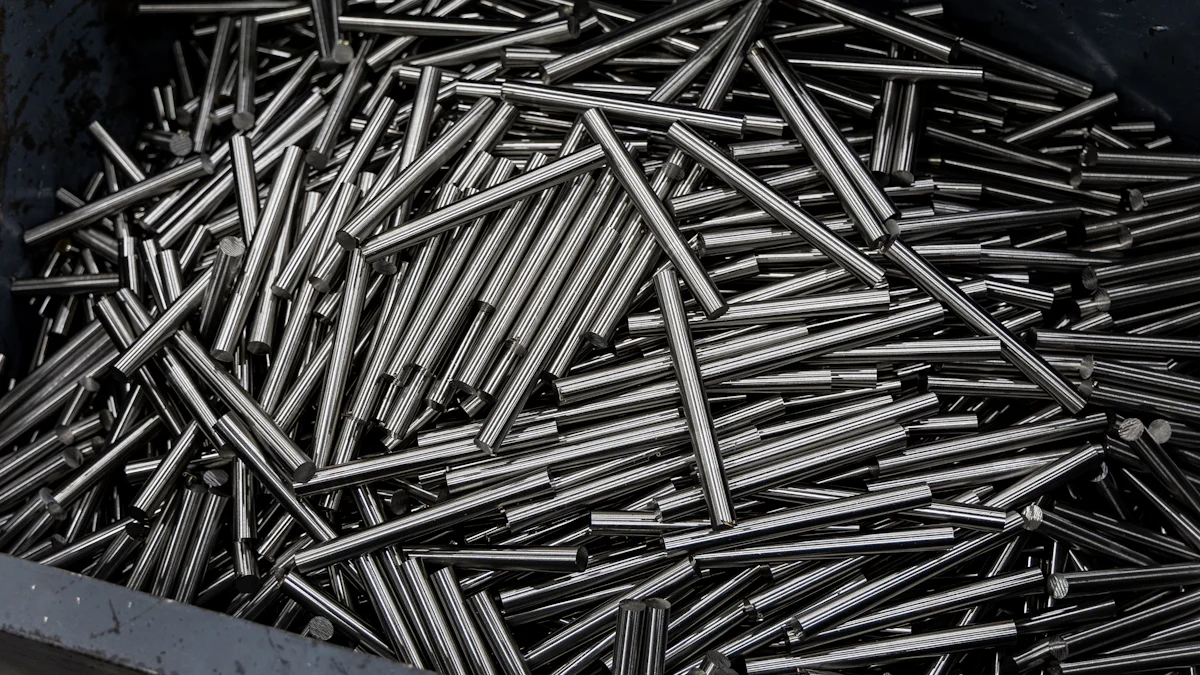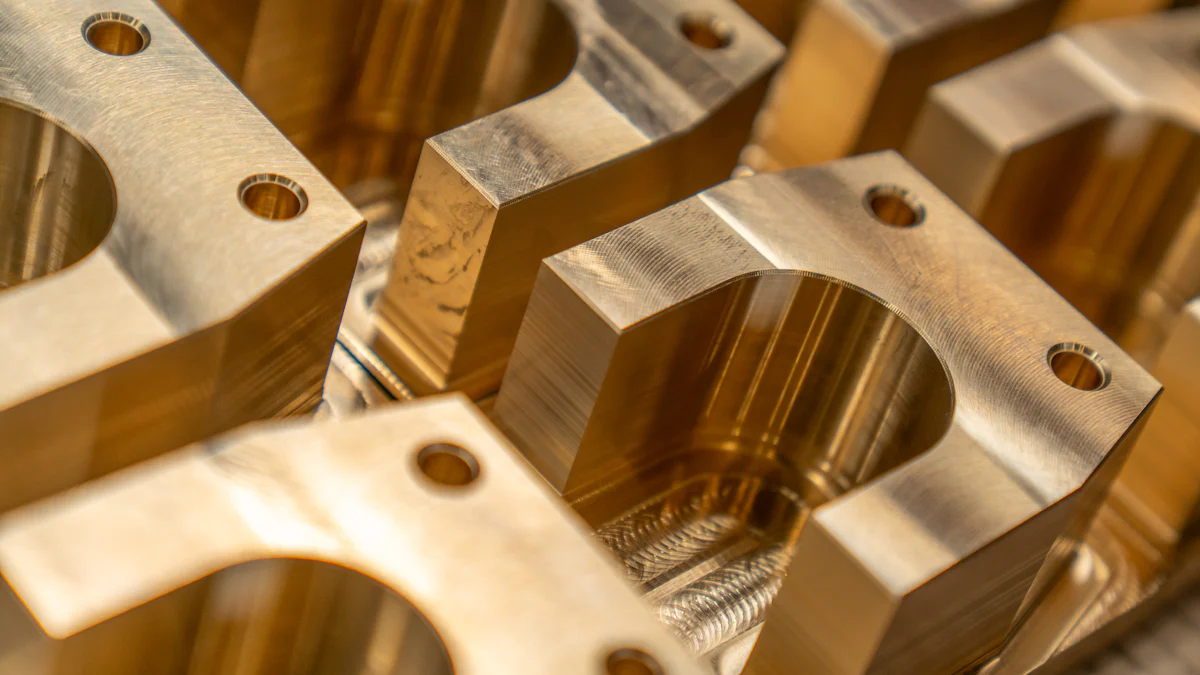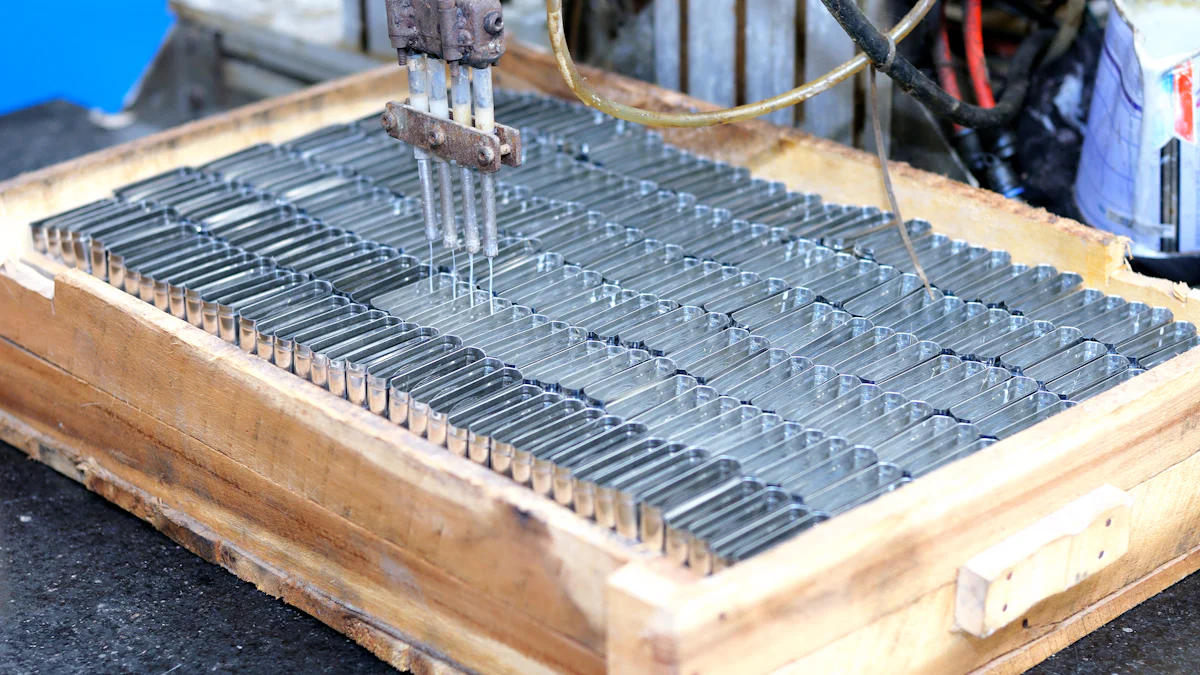
Metal injection molding (MIM) revolutionizes modern designs with metal injection molding by combining the versatility of plastic injection molding with the strength of metal. It enables the creation of intricate geometries, such as threads and engravings, with exceptional precision. Industries like medical, automotive, and aerospace increasingly rely on MIM for high-performance components due to its ability to produce lightweight, durable parts with minimal waste. The demand for miniaturized components in electronics and healthcare further underscores its importance. By offering flexibility in material selection and delivering near-net-shape results, MIM supports innovative and sustainable manufacturing practices.
Key Takeaways
- Metal injection molding (MIM) mixes strong metal with plastic shaping. It creates detailed designs and reduces waste.
- MIM saves money for big productions. It cuts material waste and labor costs but keeps good quality.
- Picking the right gate design and even wall thickness is key. This stops mistakes and keeps the product high quality.
Benefits of DESIGNS WITH metal injection molding

Achieving Precision and Complexity
Metal injection molding excels in producing intricate, high-precision components that traditional methods struggle to achieve. I’ve seen how this process allows for the creation of complex geometries, such as internal threads, thin walls, and fine engravings, with remarkable accuracy. By minimizing material waste, MIM not only reduces costs but also supports sustainable manufacturing practices. Industries like medical and aerospace benefit significantly from this capability. For example, orthopedic implants and turbine engine components require precision and durability, which MIM delivers efficiently.
The flexibility of MIM enables the use of various metal powders and alloys, allowing designers to tailor mechanical properties to specific applications. This adaptability reduces the need for extensive post-processing, saving both time and resources. Whether it’s a smartphone component or a surgical instrument, MIM ensures consistent quality across high-volume production.
Cost-Effectiveness for Large-Scale Production
MIM stands out as a cost-effective solution for manufacturing small and medium-sized components in large quantities. While the initial investment in tooling and molds may seem high, the cost per part decreases significantly as production scales up. I’ve observed how this makes MIM particularly attractive for industries like automotive and consumer electronics, where high-volume production is essential.
The process also reduces labor expenses and shortens lead times. By utilizing up to 97% of the material, MIM minimizes waste, further lowering production costs. This efficiency makes it a preferred choice for companies aiming to balance quality with affordability.
Versatility in Material Selection
One of the most impressive aspects of MIM is its versatility in material selection. From iron and nickel to titanium alloys and shape memory alloys, the range of materials available ensures that components meet specific performance requirements. For instance, titanium alloys are ideal for aerospace and medical applications due to their strength-to-weight ratio, while nickel-based superalloys excel in high-temperature environments.
I’ve noticed that this versatility allows MIM to cater to diverse industries. Whether it’s corrosion-resistant chromium for automotive parts or soft magnetic alloys for transformers, the process adapts to various needs. However, it’s worth noting that not all metals are suitable for MIM, and designers must carefully consider material compatibility during the planning phase.
Tools, Materials, and Processes in DESIGNS WITH metal injection molding

CAD Design and Prototyping Techniques
I always start with CAD design when working on metal injection molding projects. It plays a critical role in ensuring precision and accuracy. Using CAD software, I create a 3D model of the part, which allows me to visualize and refine the design before production. This step ensures that critical factors like shrinkage, wall thickness, and complex geometries are accounted for.
- Key considerations during CAD design include:
- Accounting for shrinkage during sintering.
- Ensuring uniform wall thickness to prevent defects.
- Designing gates and runners for optimal material flow.
By addressing these factors early, I can avoid costly errors and produce prototypes that closely match the final product.
Mold Creation and Material Injection
The mold creation process is where the design takes physical form. I follow a series of steps to ensure precision:
- Feedstock Preparation: Fine metal powders are blended with a thermoplastic binder to create a homogenous feedstock.
- Injection: The feedstock is injected into a mold, forming a “green part.”
- Debinding: The binder is removed using thermal or solvent-based methods, leaving a “brown part.”
This process ensures that the part retains its shape while preparing it for the next stage. Proper control during injection and debinding minimizes defects like warping or cracking.
Sintering and Post-Processing Steps
Sintering is the heart of the MIM process. I heat the brown part to just below the metal’s melting point, allowing the particles to bond. This step enhances the mechanical properties, such as strength and hardness, while achieving near-final dimensions.
- To prevent defects during sintering:
- I control the temperature to avoid blistering or cracking.
- I ensure complete decomposition of organic components before heating.
- I maintain a precise atmosphere to prevent unwanted chemical reactions.
Post-processing techniques like machining and heat treatment further refine the part. These steps help achieve specific tolerances, surface finishes, or performance standards. For example, I often use surface finishing to enhance the appearance of components used in consumer electronics.
By mastering these tools and processes, I can create high-quality components that meet the demands of industries relying on DESIGNS WITH metal injection molding.
Practical Tips for DESIGNS WITH metal injection moldingEnsuring Uniform Wall Thickness
Maintaining uniform wall thickness is critical in metal injection molding. I always ensure that the thickness remains consistent to prevent defects like warping or cracking during sintering. Ideally, wall thickness should range between 1 mm and 6 mm, depending on the part’s size. For sections thicker than 12.5 mm, I recommend redesigning to avoid non-uniform shrinkage and extended sintering times.
To achieve even thickness, I focus on keeping adjacent walls within 40-60% of each other. Adding radii to curves ensures smooth transitions, while ribs can replace thicker sections to reduce warping risks. Ribs also cool faster, making them a cost-effective solution. By following these practices, I minimize material flow inconsistencies and ensure high-quality results.
Selecting the Right Gate Design
Choosing the right gate design is essential for successful MIM production. I consider factors like gate placement, size, and the part’s geometry. For instance, I prefer placing gates in areas with the largest cross-section to ensure smooth material flow from thick to thin sections. This approach reduces the risk of defects during sintering.
Different gate types, such as tab, tunnel, jump, and drop, suit various applications. For cylindrical parts, I position the gate near the center axis to prevent distortion. Additionally, I evaluate the material’s shrinkage rate and the desired surface finish to optimize gate design. Proper gate selection ensures consistent quality and cost-effective production.
Optimizing Tolerances and Surface Finishes
Achieving precise tolerances and smooth finishes requires careful planning. I design features directly into the mold to eliminate secondary operations, saving time and costs. Combining multiple components into a single MIM part enhances strength and reliability while reducing complexity.
Material selection plays a significant role in tolerance optimization. Each material exhibits unique shrinkage rates, so I account for this during the design phase. I also monitor processing conditions, such as temperature and pressure, to maintain consistency. For surface finishes, post-processing techniques like polishing or coating help achieve the desired appearance and functionality. By addressing these factors, I ensure that the final product meets exact specifications.
Metal injection molding offers unmatched precision, cost-efficiency, and material flexibility.
| Advantage | MIM Benefits | Traditional Methods Benefits |
|---|---|---|
| Cost-Efficiency | Reduces production costs, minimizes material waste, and lowers labor expenses, especially in large quantities. | More resource-intensive, leading to higher material wastage and costs. |
| Precision and Tolerance | Offers exceptional dimensional accuracy and maintains tight tolerances. | May require extensive post-processing to achieve precision. |
| Lead Times and Efficiency | Typically has shorter lead times, enabling quicker time-to-market. | Longer setup times and processes result in extended lead times. |
| Minimal Waste and Environmental Impact | Generates minimal waste and utilizes a near-net-shape approach. | More waste generated, leading to environmental concerns. |
A major factor to consider when designing a part for manufacture with MIM is tooling design. MIM tooling requires very specific design features; these include parting lines, gates, ejector pin marks, and cam actions.
Understanding these tools and processes ensures successful implementation. I encourage you to explore MIM for your next project and unlock its potential for innovative designs.
FAQ
What types of parts are best suited for metal injection molding?
MIM works best for small, intricate components requiring high precision. Examples include medical devices, automotive parts, and electronics like connectors or gears.
How does MIM compare to traditional machining?
MIM offers superior precision, cost-efficiency, and material utilization for complex designs. Traditional machining suits larger parts or low-volume production with simpler geometries.
Can MIM handle high-strength materials like titanium?
Yes, MIM supports high-strength materials, including titanium alloys. These materials excel in aerospace, medical, and automotive applications due to their durability and lightweight properties.
Media Contact
Company Name: Ningbo Jiehuang Chiyang Electronic Tech Co.,Ltd.
Email: Send Email
Phone: +86 13605745108
Address:Room306 C-Area Building No.10, R&D Park, No 999, Yangfan Road, High-Tech Zone
City: Ningbo 315000
State: Zhejiang
Country: China
Website: https://www.jhpim.com/
